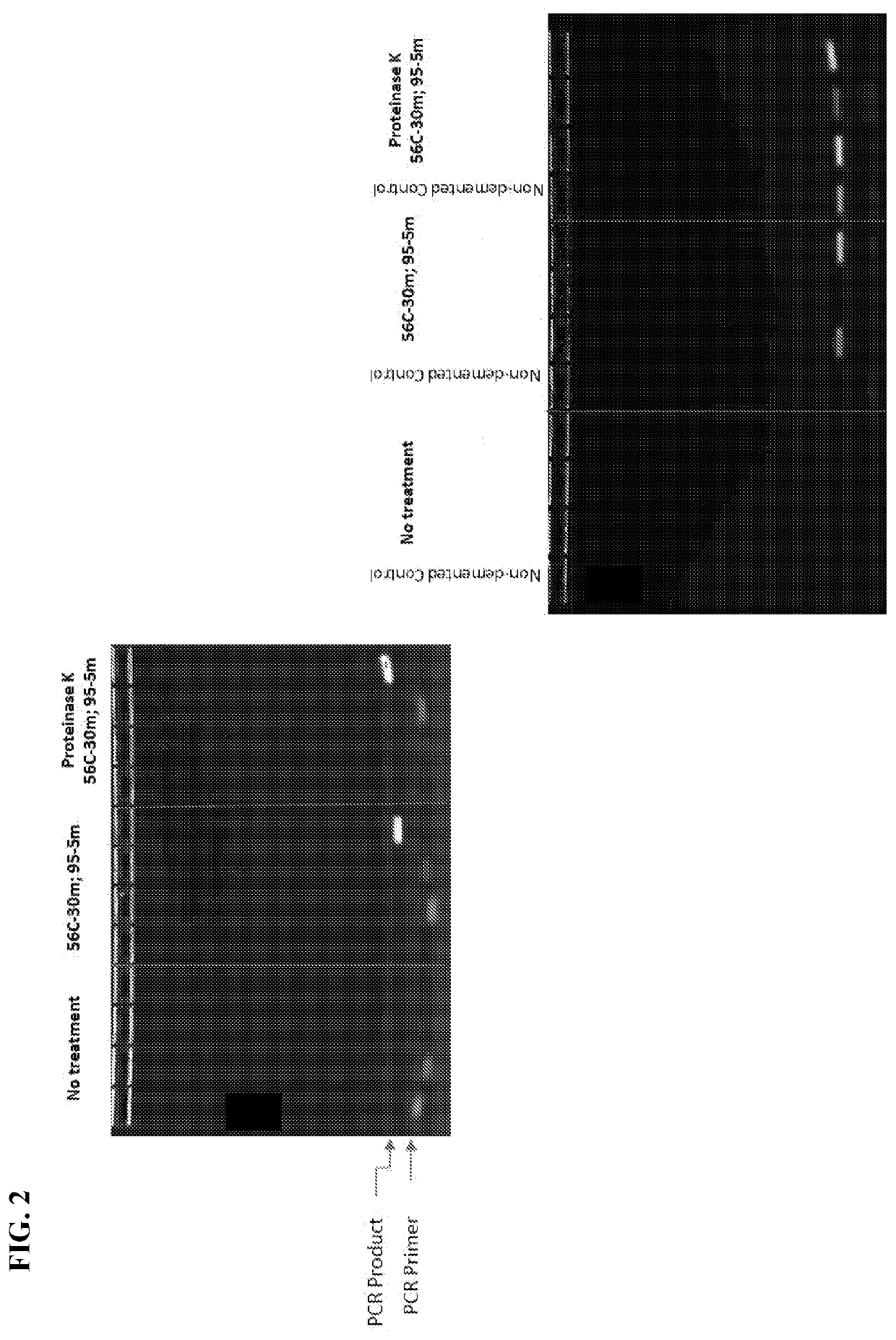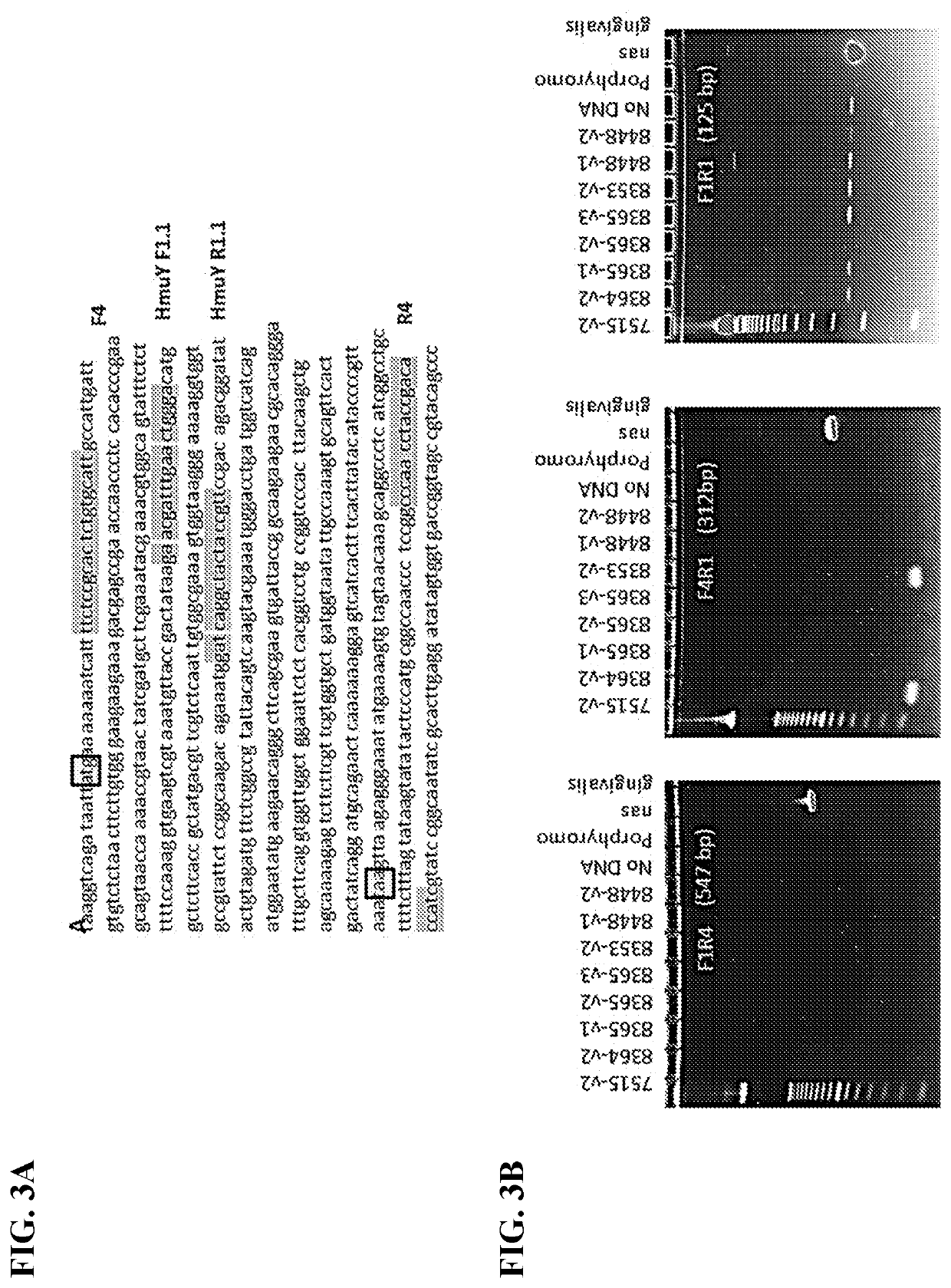Methods for detection of microbial nucleic acids in body fluids
a nucleic acid and body fluid technology, applied in the field of body fluid detection methods, can solve the problems of inability to detect i>p. gingivalis/i>and diagnose brain and spinal cord infections without the need for invasive tissue biopsy
- Summary
- Abstract
- Description
- Claims
- Application Information
AI Technical Summary
Benefits of technology
Problems solved by technology
Method used
Image
Examples
example 1
cid Sample Preparation and PCR Methodology
[0066]CSF DNA Isolation. DNA was isolated from 50 μL CSF using a Bacteria / Yeast DNA Extraction Kit (Qiagen) with some modifications as detailed below. An 11× volume (550 μL) of lysis buffer was added to 50 μL CSF and the mixture was incubated at 80° C. for 5 min. Attempts to lyse P. gingivalis with a reduced volume (3×) of lysis buffer resulted in low recovery of DNA. The lysate was then incubated with 3 μL proteinase K (Qiagen) at 56° C. for 1 h followed by incubation with RNase for 15 min to digest protein and RNA respectively. Protein precipitation solution (200 μL) was added to each tube and incubated on ice for 5 min. Precipitated proteins were centrifuged at 13K for 5 min at room temperature using an Eppendorf centrifuge, model 5415R. Supernatants were transferred to fresh tubes, and 2 μL Pellet Paint (EMD Millipore) and 600 μL isopropanol were added to each tube. The samples were incubated at room temperature for 5 minutes and precipi...
PUM
| Property | Measurement | Unit |
|---|---|---|
| temperatures | aaaaa | aaaaa |
| temperatures | aaaaa | aaaaa |
| volume | aaaaa | aaaaa |
Abstract
Description
Claims
Application Information
 Login to View More
Login to View More - R&D
- Intellectual Property
- Life Sciences
- Materials
- Tech Scout
- Unparalleled Data Quality
- Higher Quality Content
- 60% Fewer Hallucinations
Browse by: Latest US Patents, China's latest patents, Technical Efficacy Thesaurus, Application Domain, Technology Topic, Popular Technical Reports.
© 2025 PatSnap. All rights reserved.Legal|Privacy policy|Modern Slavery Act Transparency Statement|Sitemap|About US| Contact US: help@patsnap.com



